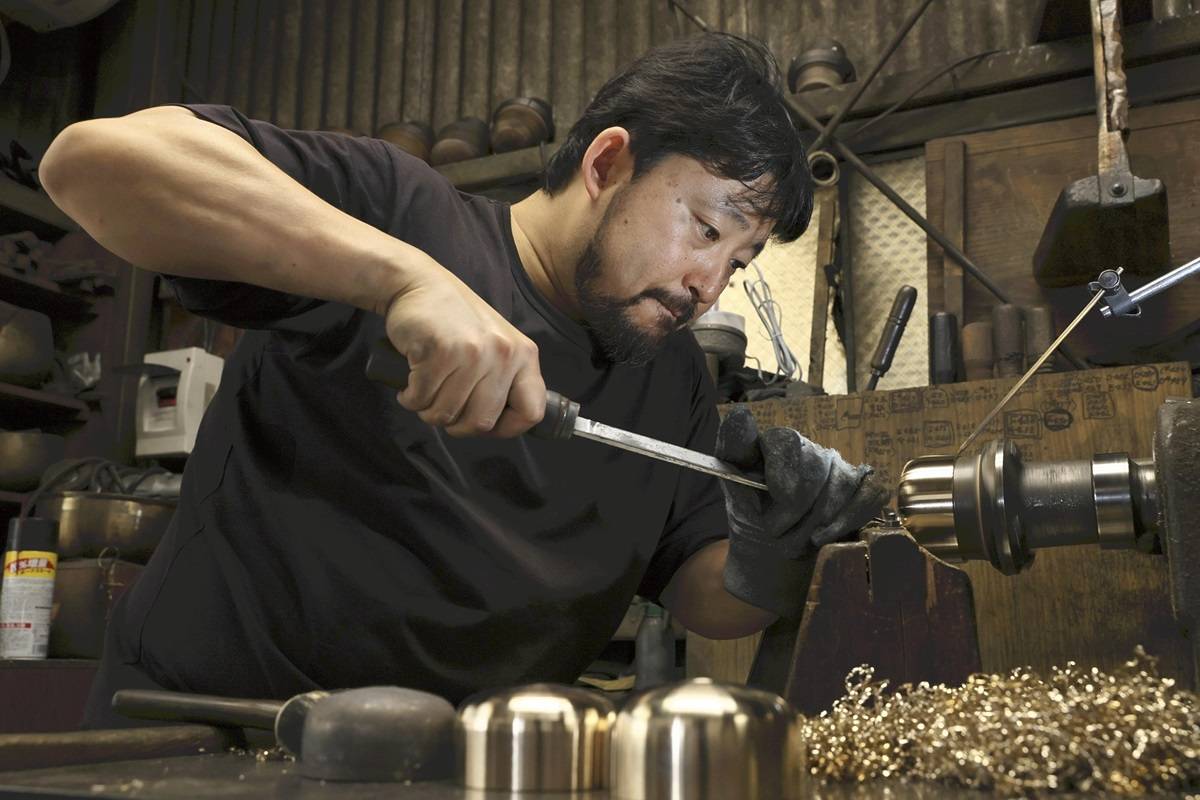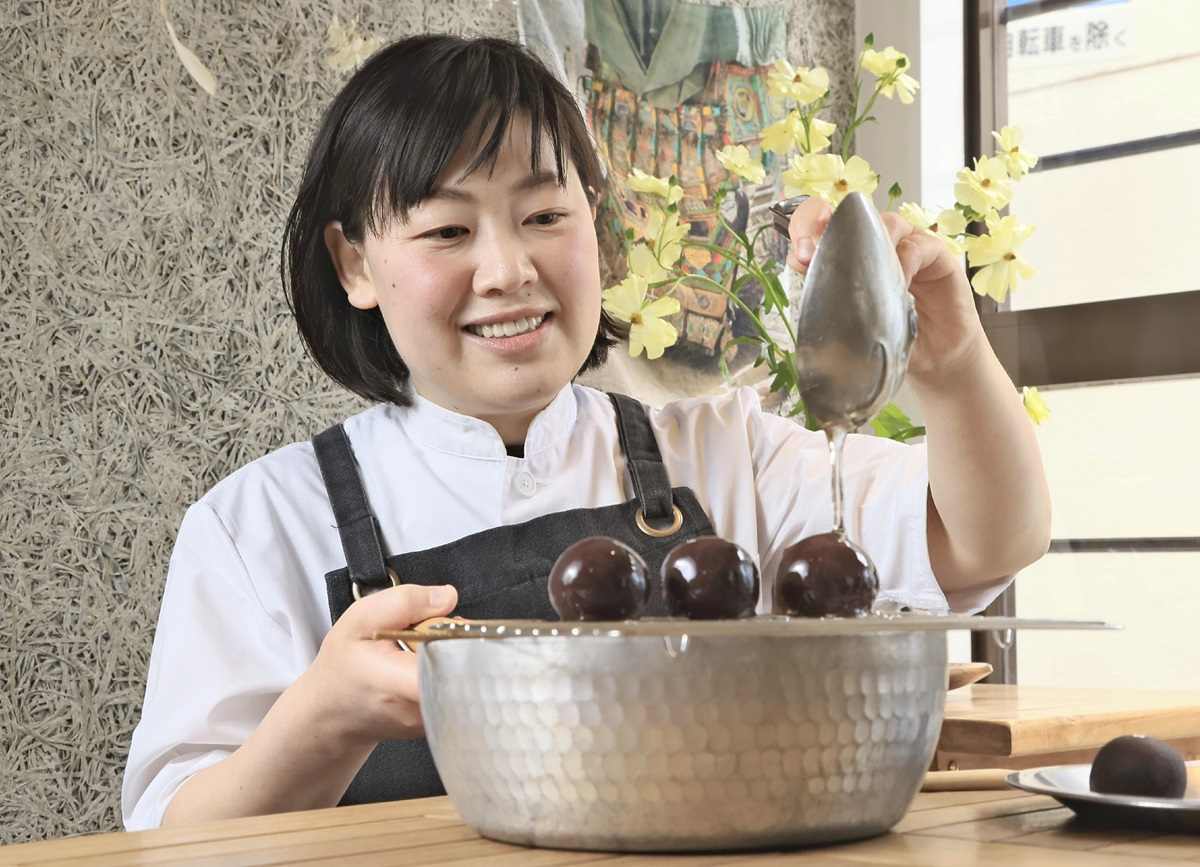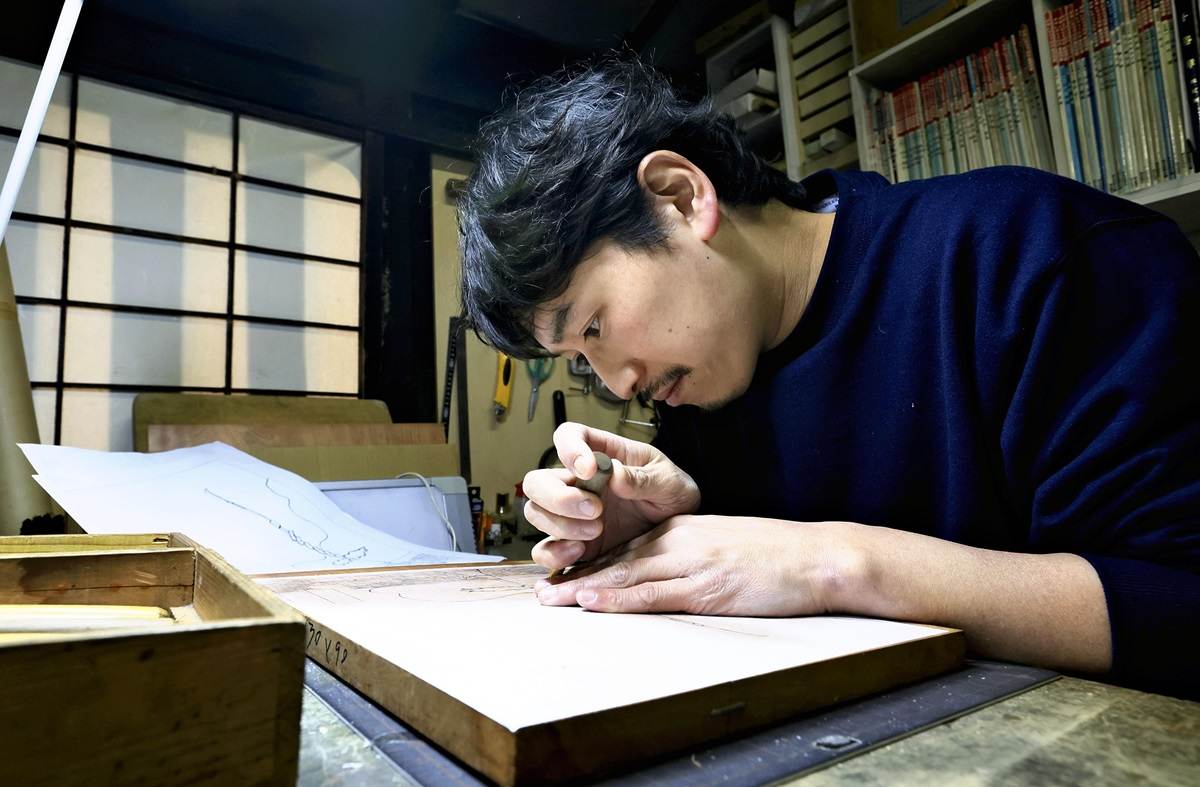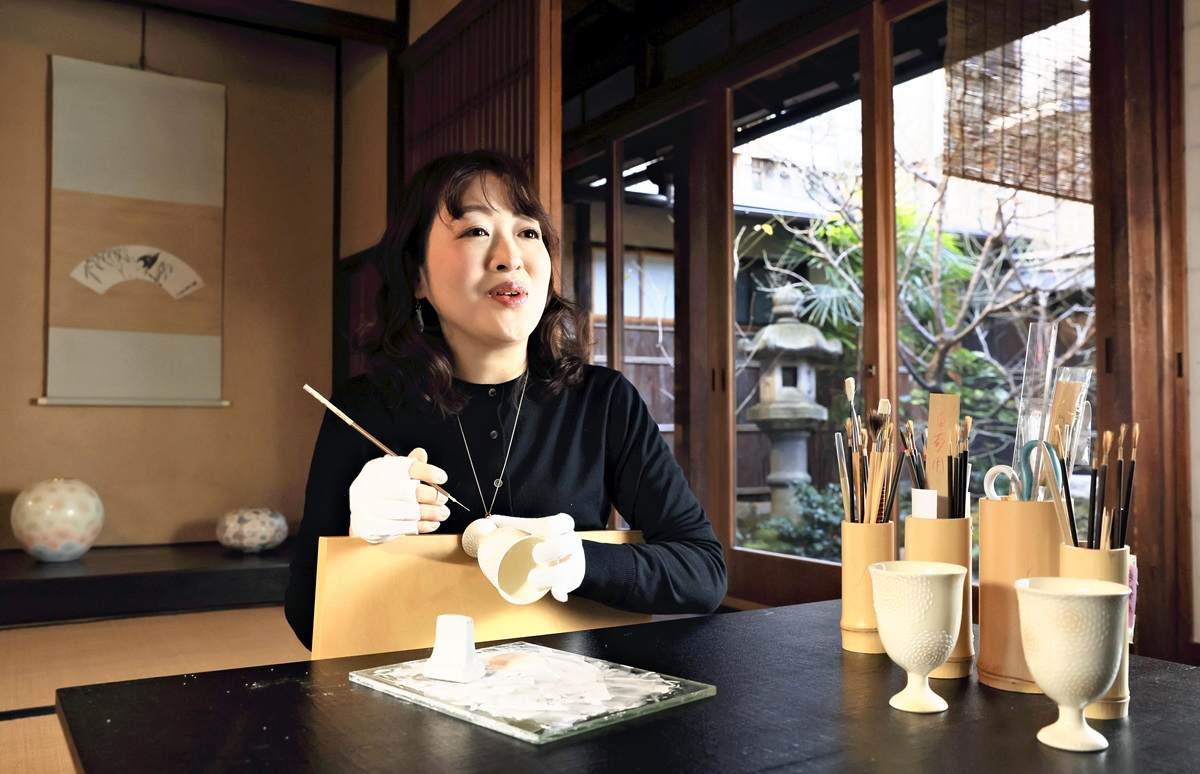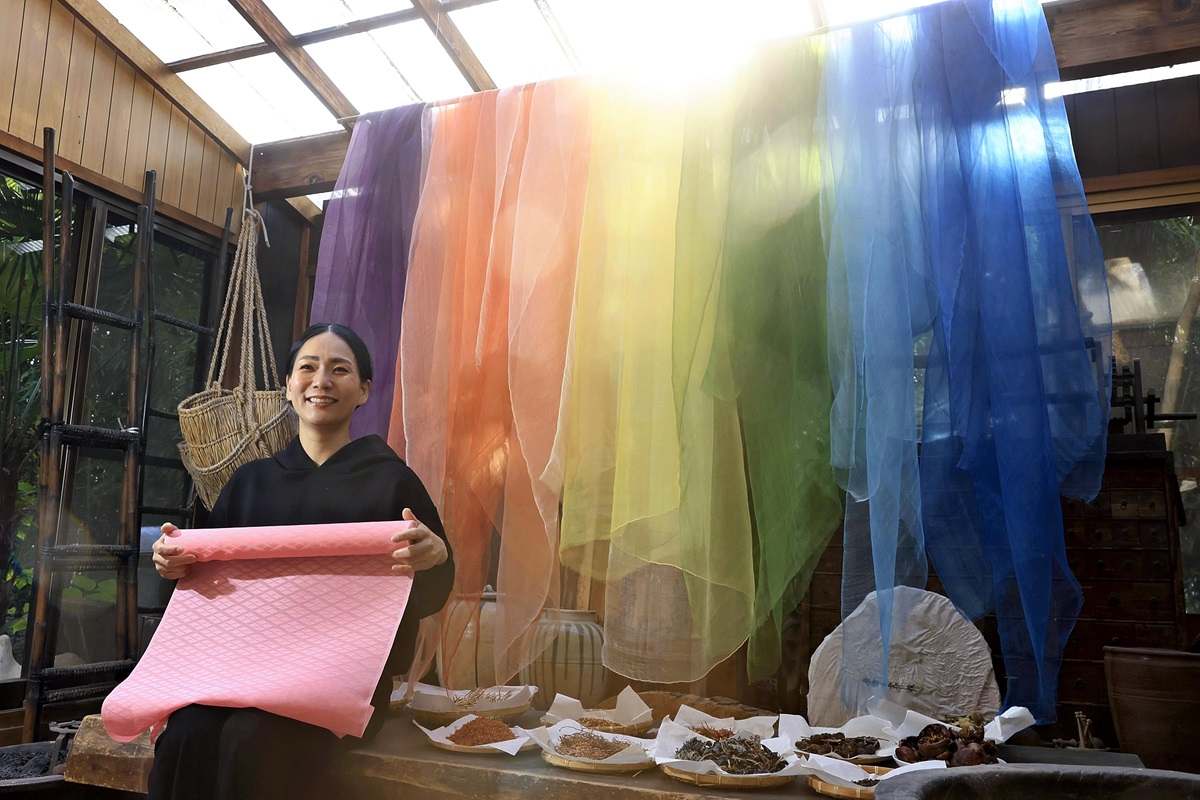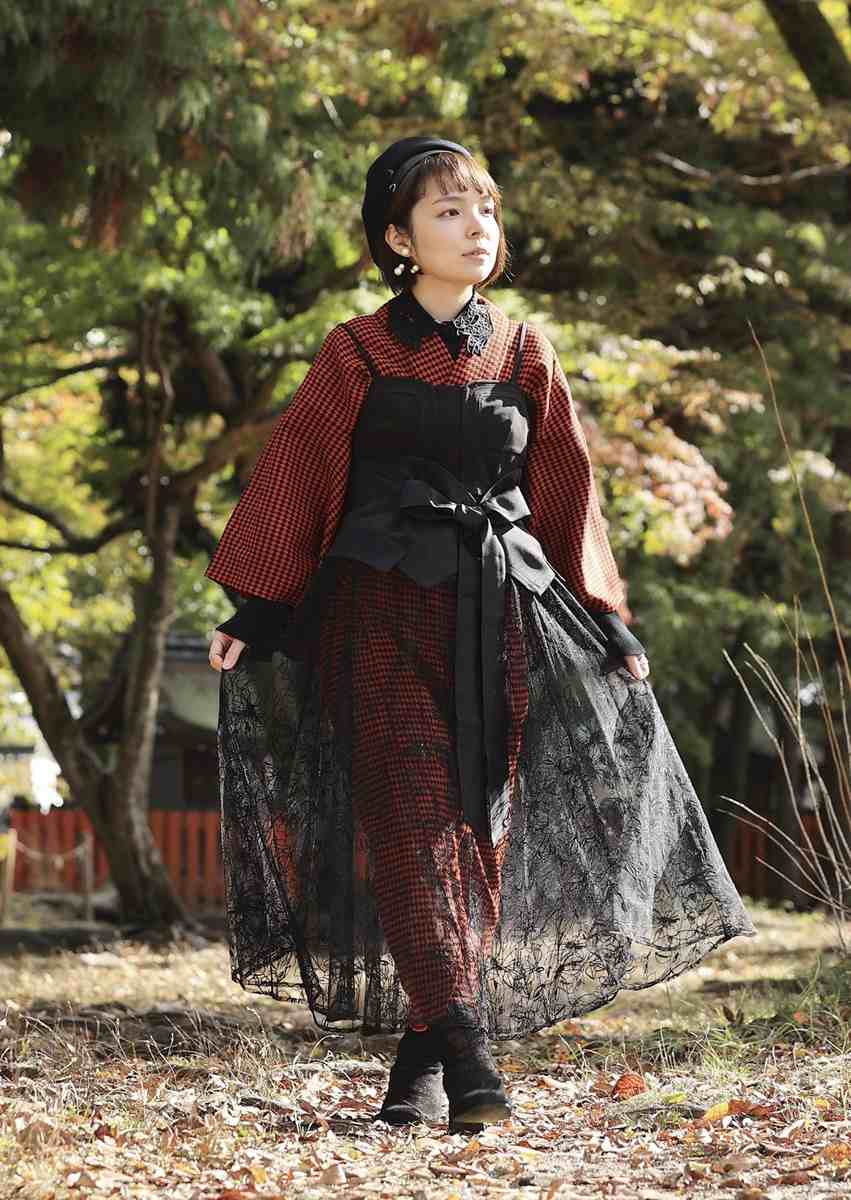Heirs to Kyoto Talent / Gion Festival Supporter Looks After Boys Playing Divine Roles
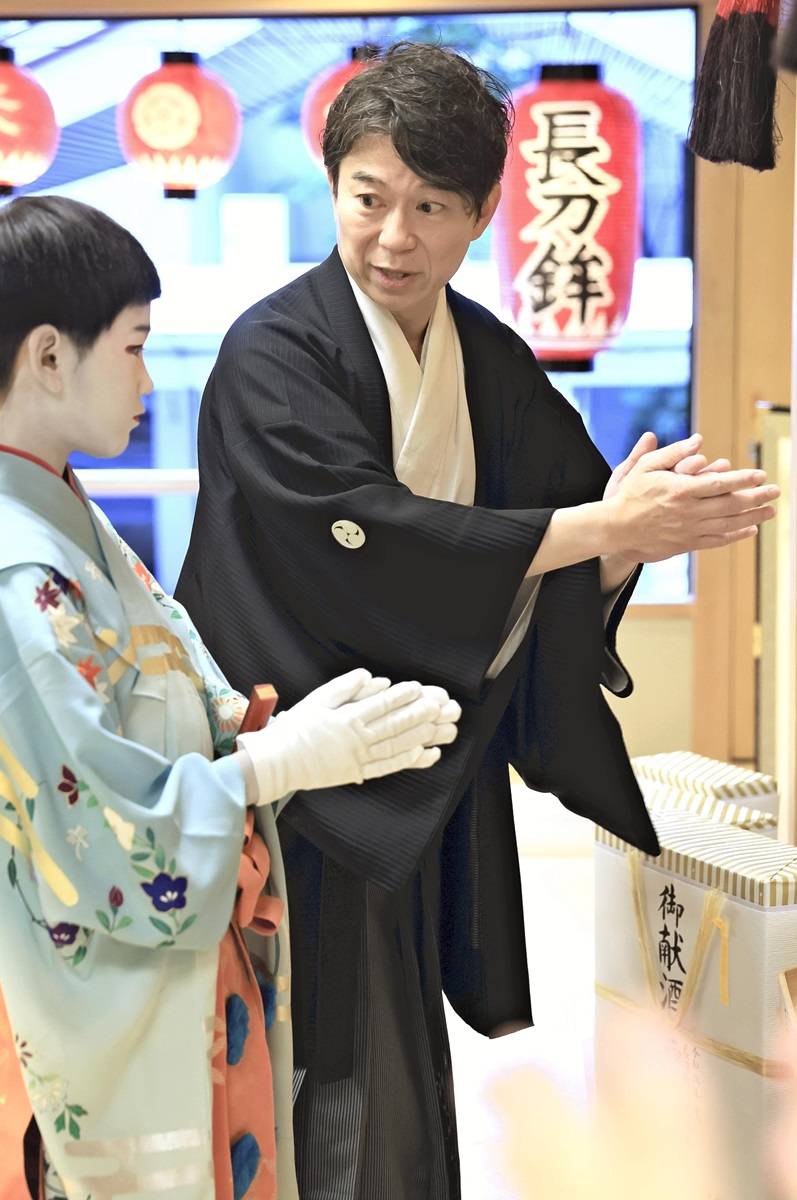
Hiroyuki Ijiri, right, teaches the chigo Masaki Nishikawa about the etiquette for worshipping at Yasaka Shrine on July 1 in Shimogyo Ward, Kyoto.

12:30 JST, August 3, 2024
KYOTO — The ancient capital was once again filled with the colors of the annual July Gion Festival.
Ahead of the festival, in the afternoon of July 5, a crowd braved the scorching heat of over 36 C to gather on Shijo Street in central Kyoto and watch a boys’ ritual dance performed on the second story of a building.

Masaki Nishikawa performs the Taihei no Mai dance at a window on second floor of a building during a ritual on July 5.
The dance, the first ritual of the festival, was to be performed again on the Naginata-hoko float, which leads the other 22 floats in the procession every year at the festival. The dance began to a roar of applause from the crowd.
An 11-year-old boy and two assistant boys, 7 and 8 years old, leaned out the windows of the building. They performed the Taihei no Mai (a dance to pray for peace and good health).
The main performer of the Naginata-hoko float, who is believed to be a messenger of the deities, is called the “chigo,” and the two assistant boys are called “kamuro.”
Hiroyuki Ijiri, head of the team in charge of the chigo and the other boys, watched over the performance enthusiastically. He said the ritual was practice for the main performance scheduled for the procession on July 17, with the second-floor window representing the boys’ elevated position on the float.
“With mutual trust between us and the boys, we’ll help them overcome their fears,” Ijiri said.
The procession begins with the chigo using a sword to cut the shimenawa (sacred straw rope) that separates this world from the divine. The chigo is considered a sacred being who must be carried by someone when moving so that he doesn’t step on the ground.
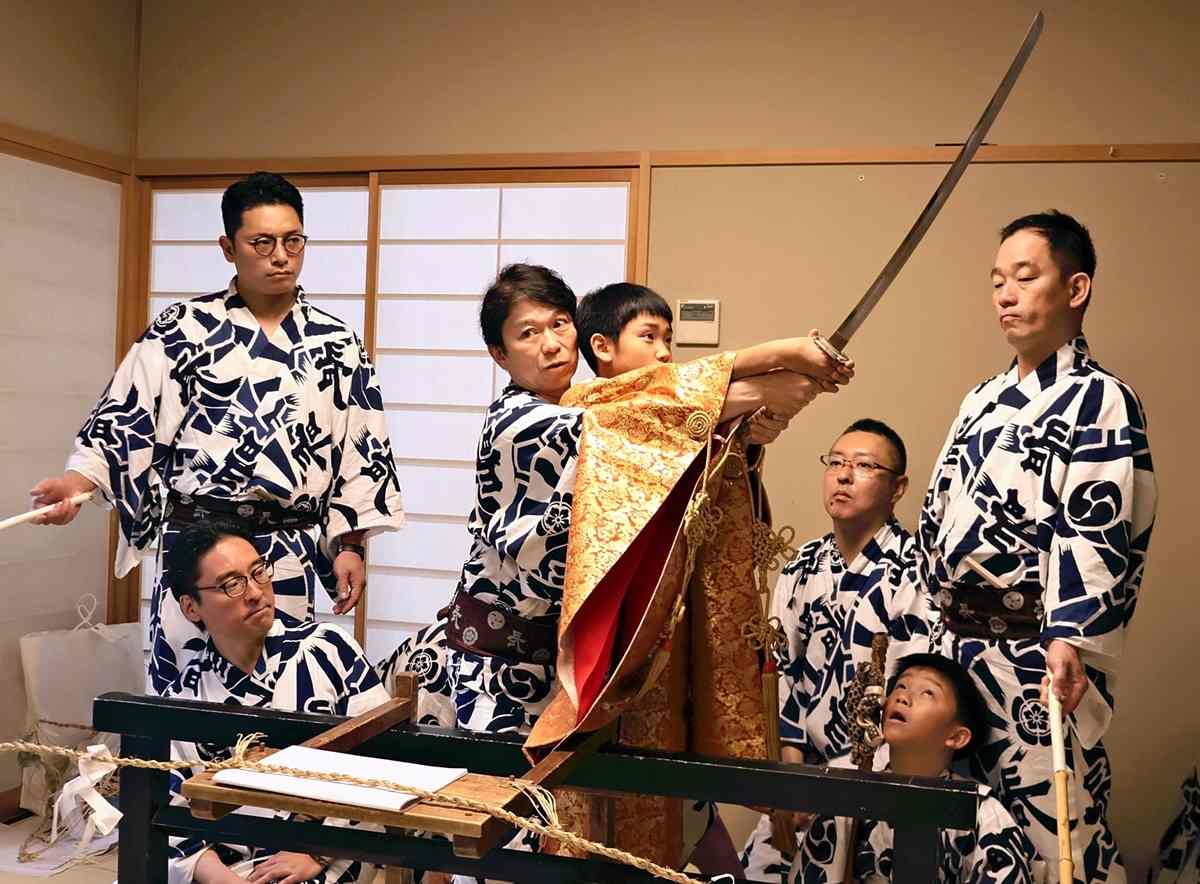
Hiroyuki Ijiri and Masaki Nishikawa, center, practice the shimenawa rope cutting ritual in Kyoto.
Mentoring his 21st chigo
A four-member team is in charge of the chigo and the other boys. The team does a variety of tasks, including those related to performer selection and assisting performers and their families.
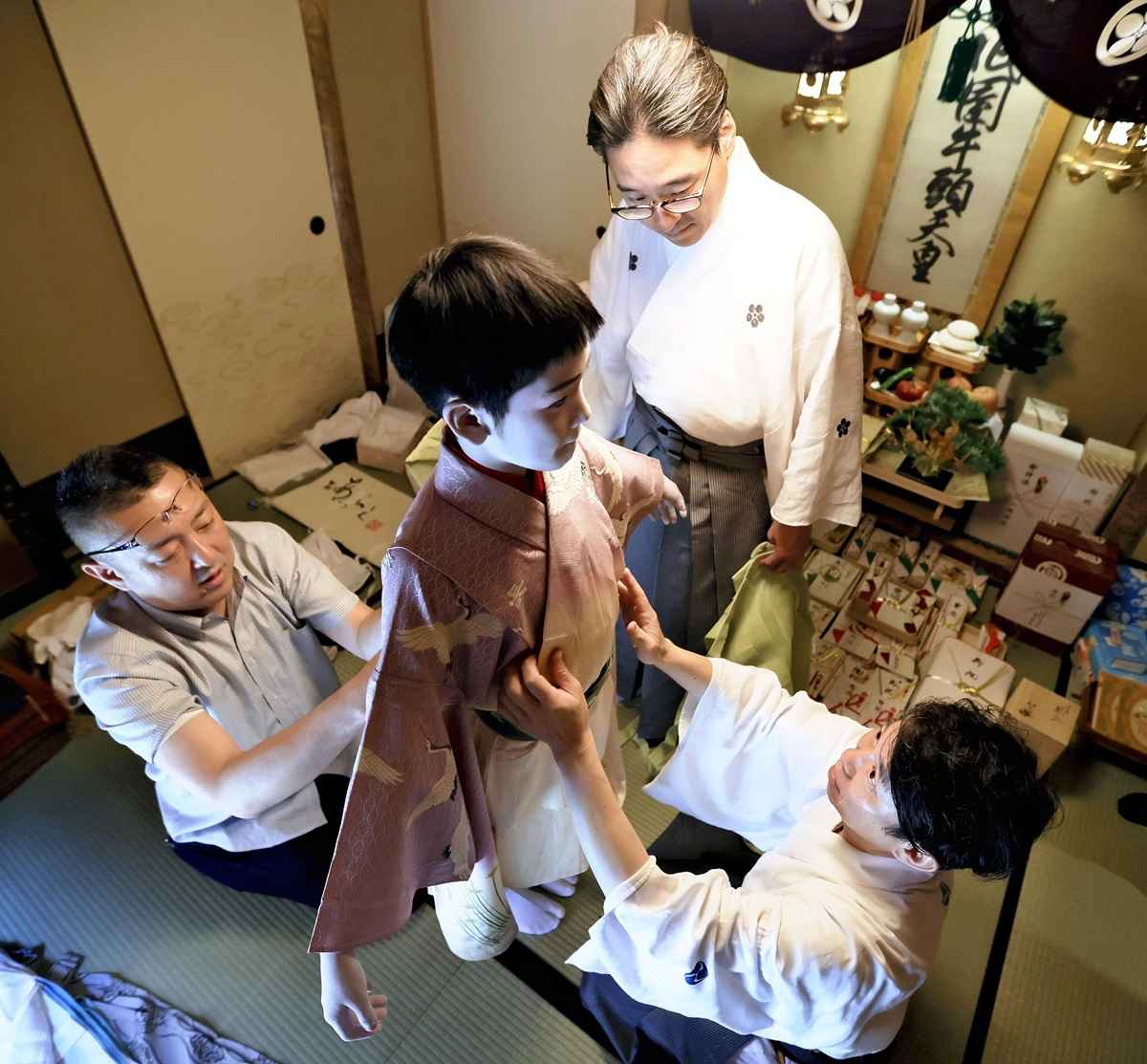
The chigo team works together to dress Masaki Nishikawa boy in a festival costume on July 5.
Ijiri is the president of Futaba Kagu, a furniture manufacturer and retailer in Kyoto. He got involved with the float at the age of 8 as a musician.
In 1978, when he was in the fourth grade, he was selected as the chigo. Since then, he has always been a musician. However, his experience as a chigo led to him being appointed to the chigo team. Masaki Nishikawa, whom Ijiri watched over this summer, is the 21st chigo he has sent to the festival.
On July 2, the chigo team held a dance rehearsal for the boys. They were dressed in yukata summer kimono and practiced for about 90 minutes. The team worked hard to teach them not only how to dance but also the meaning and history of the rituals, movements and even the ornaments.
In the Taihei no Mai, for example, the chigo wears a small drum on his belly and beats it with sticks by moving them in a large circular motion. The assistant kamuro boys maneuver gold-leafed uchiwa fans in a circular motion.
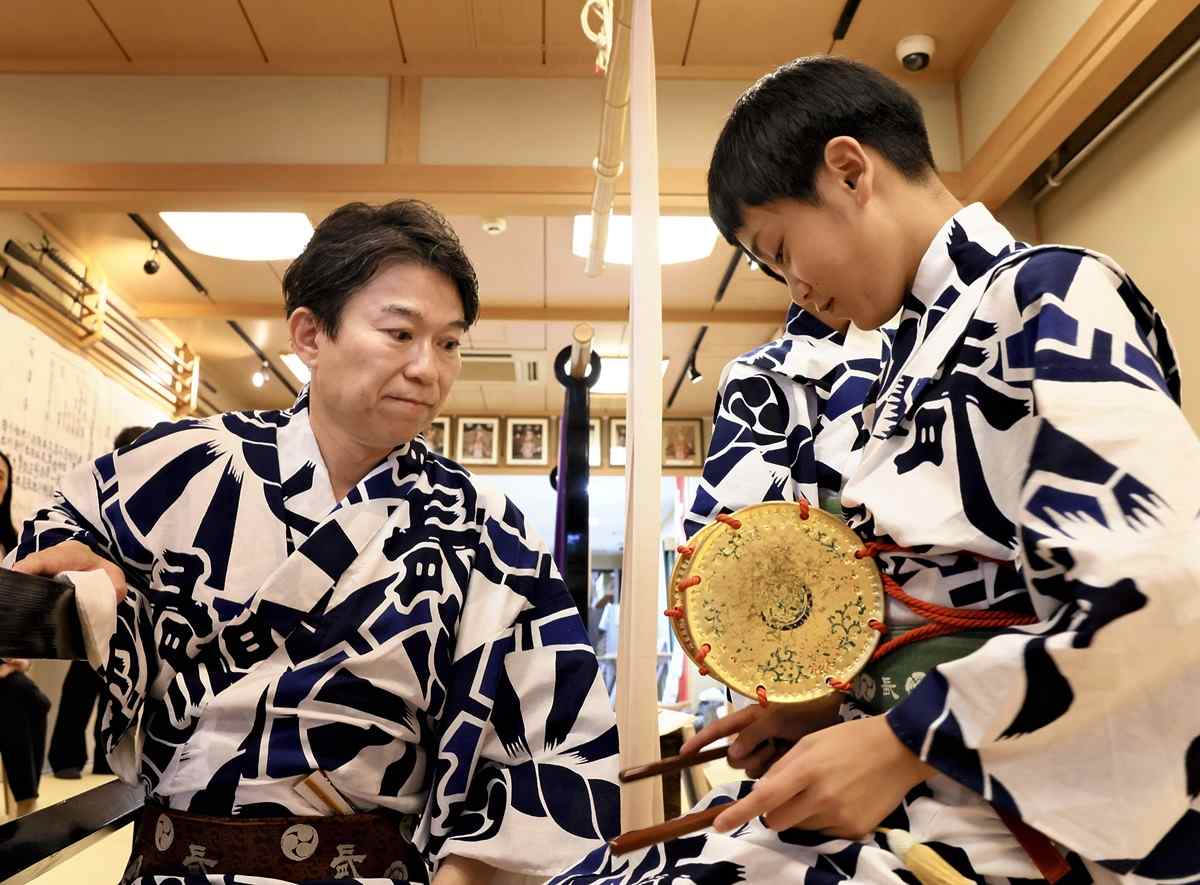
Hiroyuki Ijiri teaches the chigo how to beat a drum on July 2.
“The chigo symbolizes the moon, and the kamuro symbolize the sun. The float moves forward while purifying evil things with the power of the full moon and the sun,” Ijiri explained to the boys in an easy-to-understand, memorable way.
The boys made their debut in a ceremony on June 12 in which chigo Masaki Nishikawa was adopted ceremonially as the son of the Naginata-hoko district. That was followed by another ceremony on July 1 in which the boys visited Yasaka Shrine. They also joined other rituals, including one in which the chigo becomes a messenger of the deities. Finally, they reached the day of the procession on July 17.
Using own experience
Whenever Ijiri meets a new chigo, he remembers his own experiences in that role many years ago: the strings of the crown so tight that it hurt him and the difficulty he felt when trying to mount a horse while wearing hakama pants. He remembered feeling very sad when the procession was over and he was told, “This is the end.”
Ijiri realizes his current position calls on him to pass on to younger people his experiences and the knowledge he gained from his predecessors and older veterans of the festival.
The strings and obi sash of the festival costumes may cause pain to the children depending on how they are tied, resulting in interruptions to the ceremonies, so the children must be dressed carefully. Also, some of the children might cry from stress or the exhaustion of having to perform in consecutive rituals.
“They can’t continue if it’s always hard and demanding. I let them play as much as they want when they’re not seen by the audience,” Ijiri said. He always tries to make them laugh during dance rehearsals. The three boys chosen for this year’s festival had natural, relaxed expressions on their faces every now and then.
Every year, as the procession day approaches, Ijiri feels like the boys’ expressions change.
“I could almost say they were possessed by the gods. I’ve encountered that kind of scene many times,” Ijiri said. “I won’t tell it in detail because nobody believes me.”
The festival began 1,155 years ago as a way for people to pray for the eradication of plagues. Having experienced the fear of a rapidly spreading novel virus during the COVID-19 pandemic, Ijiri became more aware of the significance of organizing the festival.
On the morning of the float procession, before the Naginata-hoko float departs, there is time for Ijiri to meet the chigo alone after all the other members have left. Although it is only a few minutes, Ijiri said he loves that moment.

Hiroyuki Ijiri, left, and Masaki Nishikawa spend some time alone before the start of the procession in Kyoto on July 17.
“In that quiet atmosphere, I just talk about trivial things with the boys, but I feel a sense of accomplishment,” Ijiri said. “That moment makes me want to continue to be involved with the chigo.”
***
If you are interested in the original Japanese version of this story, click here.
"Features" POPULAR ARTICLE
-

Sanrio to Open Museum in Yamanashi Pref. Dedicated to Founder, Exhibits Include Hello Kitty, Other Characters
-

Autumn Foliage Surrounds Visitors to Tokyo’s Showa Kinen Park
-

My Daughter No Longer Speaks to Me, But I Want to See Her and My Grandchild
-

Kumamoto: Public Bath Refurbished as Library Where You Can Chat, Take Photos
-

Frozen Vegetables: Demand Rises for Convenient, Tasty Domestic Produce
JN ACCESS RANKING
-

Keidanren Chairman Yoshinobu Tsutsui Visits Kashiwazaki-Kariwa Nuclear Power Plant; Inspects New Emergency Safety System
-

Tokyo Economic Security Forum to Hold Inaugural Meeting Amid Tense Global Environment
-

Imports of Rare Earths from China Facing Delays, May Be Caused by Deterioration of Japan-China Relations
-

University of Tokyo Professor Discusses Japanese Economic Security in Interview Ahead of Forum
-

Japan Pulls out of Vietnam Nuclear Project, Complicating Hanoi’s Power Plans
